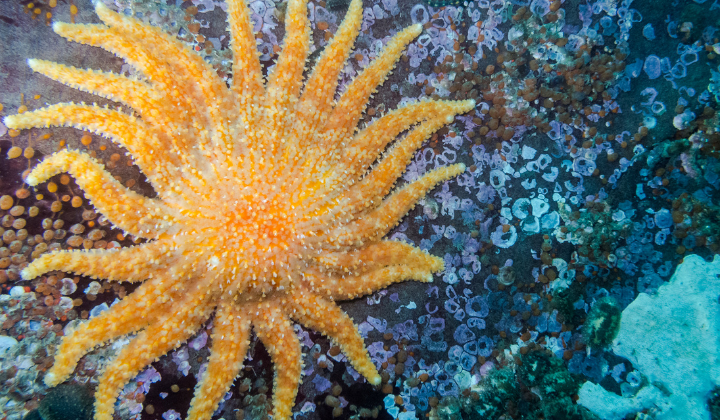
「原稿」
A sea creature known as the sunflower sea star was once plentiful in the Pacific Ocean along the coast of North America. They used to be found in the waters along the coast of Mexico’s Baja peninsula all the way to Alaska.
しかし、この10年で約9割が死亡しています。
ワシントン大学の科学者たちは、なぜウミウシが死んでしまったのかを解明しようとしている。そのために、研究室でウミウシを育てています。
この病気は「海星消耗症候群」と呼ばれている。
Friday Harbor Marine Labのトップ研究者であるJason Hodin氏。気候変動による海水温の上昇で病気になった可能性があるという。
ラボはシアトルの北西にあるサンファン島にある。1歳から3歳までのウミウシが150匹近くいるそうです。また、幼生の段階にある約5,000匹のオニヒトデも飼育しています。また、海水から移した成体も16体いる。
ホーディンは、自分の研究室を「世界で唯一、絶滅の危機に瀕しているウミウシの飼育下繁殖プログラム」と呼んでいる。絶滅危惧種とは、絶滅の危機に瀕しているという意味です。
大学の神経科学部門もこの研究に取り組んでいます。暖かい水が星の動きを変えるかどうかを調べようとしているのです。
このグループは、特殊なカメラを使って星の動きを観察し、違いを示すことができる立体的な写真を作っています。水温の変化など、小さな環境の変化でも違いがわかるようになります。
今のところ、研究者たちは、ウミウシがより暖かい水の中で生き残ることができると考えている。それは良いことだとホーディンは言う。
"ヒマワリの星が、人間の援助の有無にかかわらず、野生で回復するとしたら、それは気候の変化の中で行うことになるだろう "とHodinは言う。
Words in This Story
plentiful –adj. very many, a lot
peninsula –n. a piece of land surrounded by water on three sides
wasting –adj. to live badly or be unable to grow
syndrome –n. a disease or disorder
larvae –n. eggs of a type of animal
captive –adj. under the control of someone or something else
breed –v. to match one animal with another in hopes of creating babies
*This article has been edited and reprinted from VOA Learning English with permission from Voice of America (VOA) for use in English language materials.
